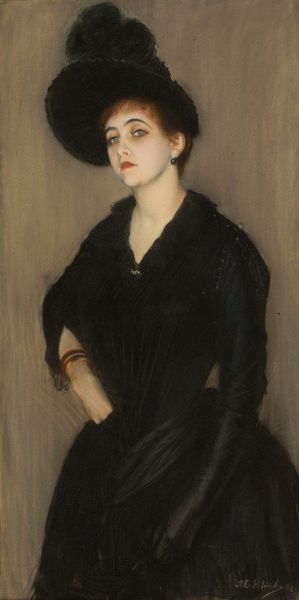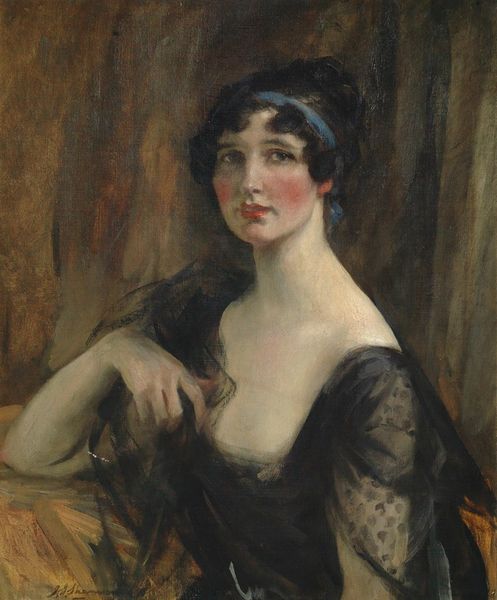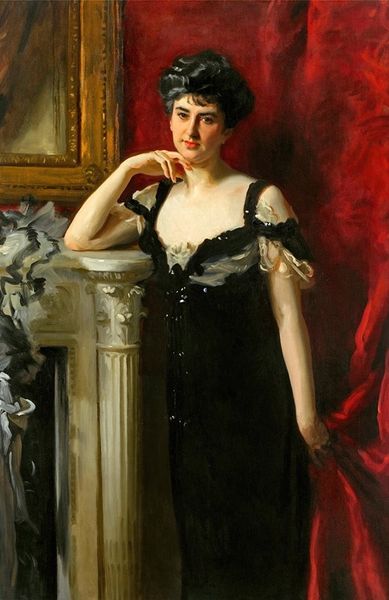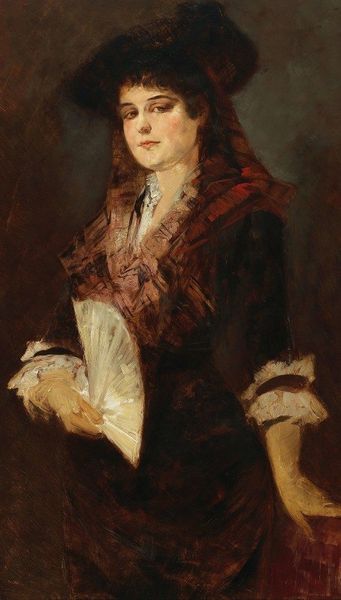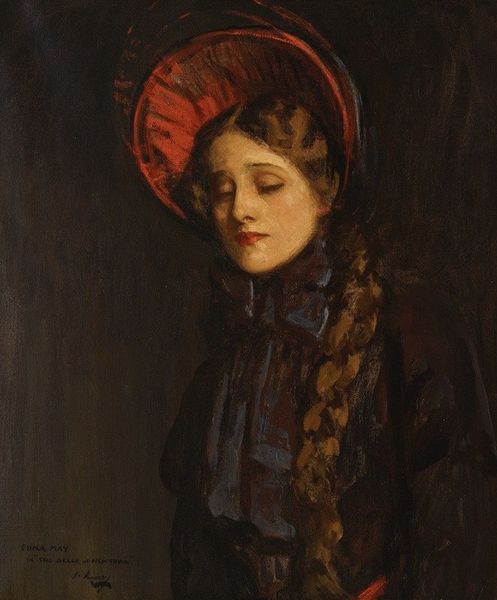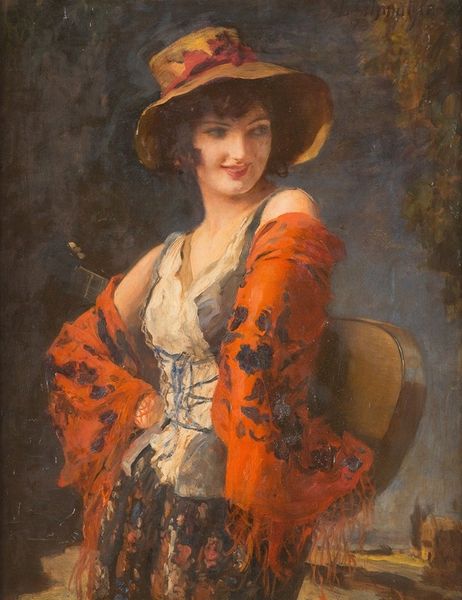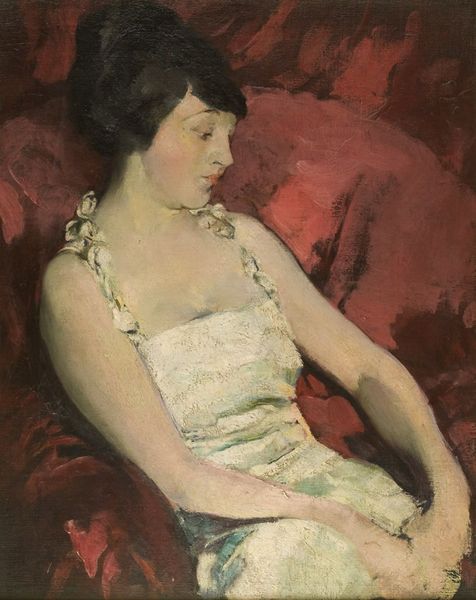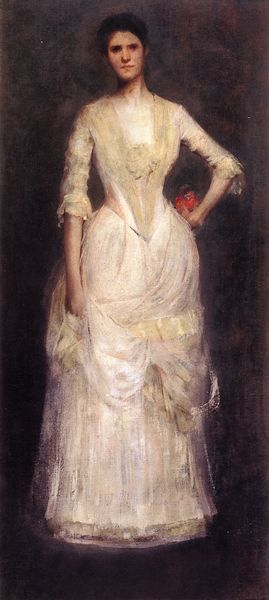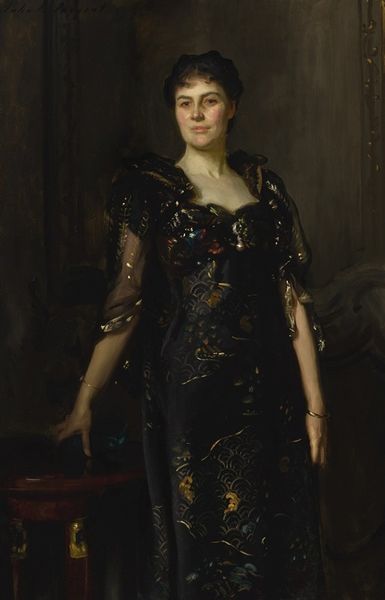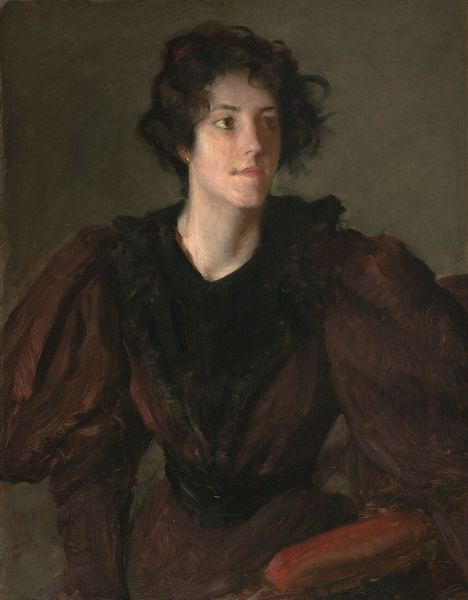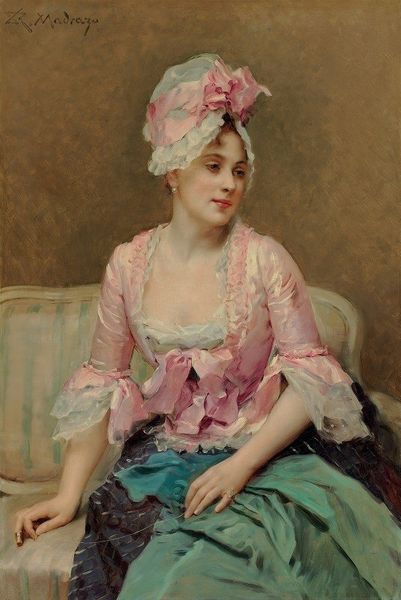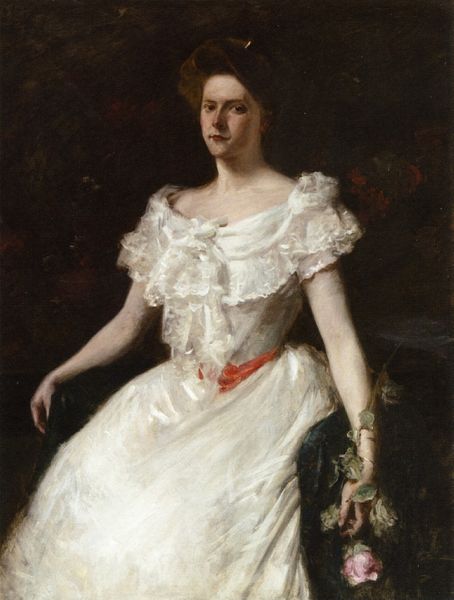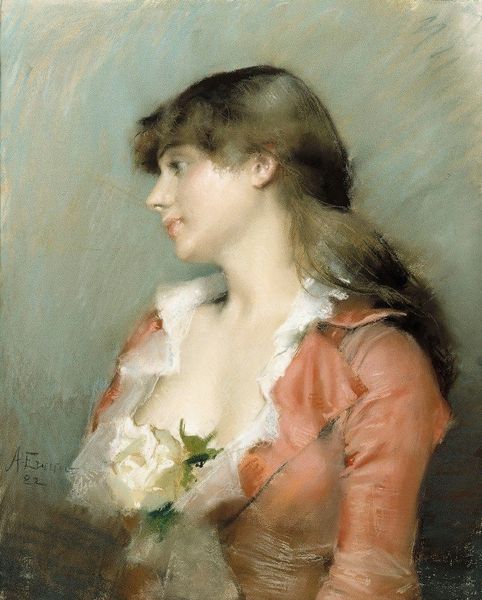
#
portrait
#
possibly oil pastel
#
oil painting
#
acrylic on canvas
#
underpainting
#
facial painting
#
painting painterly
#
animal drawing portrait
#
lady
#
portrait art
#
female-portraits
#
fine art portrait
#
digital portrait
Copyright: Public domain
Curator: This is Childe Hassam's "Fire Opals," also known as "Lady in Furs - Portrait of Mrs. Searle," painted in 1912. Editor: My initial feeling is one of quiet opulence. The dark fur against the pastel dress creates a striking contrast, a push and pull between groundedness and ethereal lightness. Curator: Indeed, the portrait resonates with the fashionable symbols of its time. The fur, of course, but also the dress with its subtle floral patterns, and particularly the hat. Think about the status those items conveyed. It evokes a certain narrative about femininity and societal expectations in the early 20th century. Editor: Yes, and formally, consider how the painterly strokes emphasize the textures—the softness of the fur, the delicate fabric of the dress, even the skin. There's a real focus on materiality here. The artist’s brushstrokes serve to render not just image but texture and surface. The limited palette reinforces this sensation—a delicate balancing of light and shadow. Curator: The darkness of the fur also carries a psychological weight, don't you think? It both accentuates and nearly overwhelms the figure of Mrs. Searle. Could it represent a kind of confinement or the heavy expectations placed upon women of her social standing? Perhaps a premonition of darker events soon after? Editor: Perhaps. It also directs the eye. Its placement almost bisects the canvas creating distinct spatial arrangements. We get the figure centrally positioned on the left, while we catch just a glimpse into what could be considered a “domestic” interior to the right. These competing structural components ultimately resolve by the subject’s line of sight and gesture toward the same interior space. This resolves and unites the composition quite convincingly. Curator: So, the fur is not only an accessory but also a critical narrative device, linking the woman to her context, her role. Editor: Precisely. The painting compels us to reflect on how art itself constructs meaning through both material representation and compositional relationships. The seemingly superficial can become profound when interrogated visually. Curator: Ultimately, the piece suggests beauty is entwined with a deeper sense of societal commentary. Editor: Leaving us much to contemplate on form, technique, symbol, and surface in the painting’s enduring charm.
Comments
No comments
Be the first to comment and join the conversation on the ultimate creative platform.
